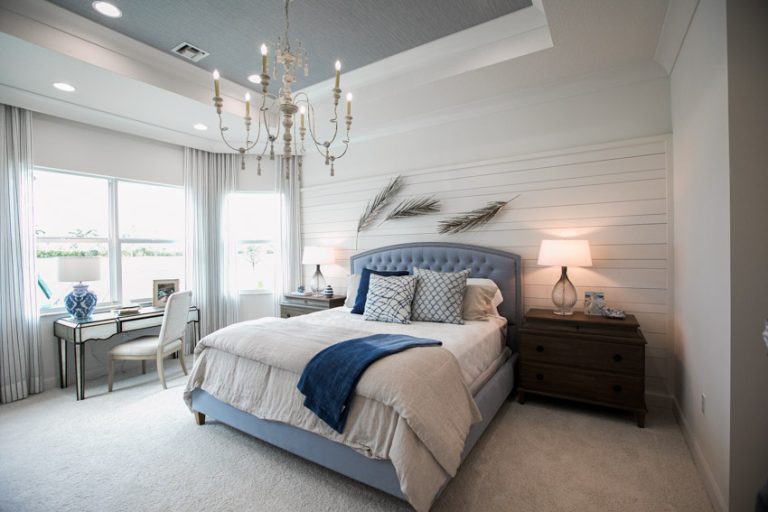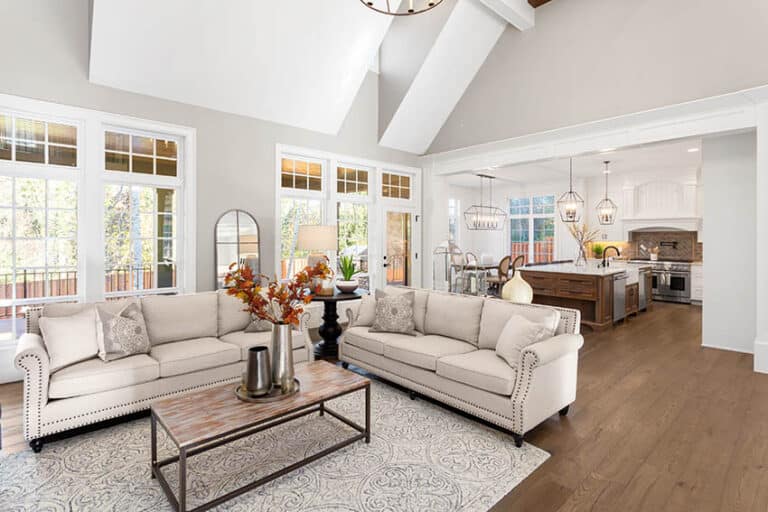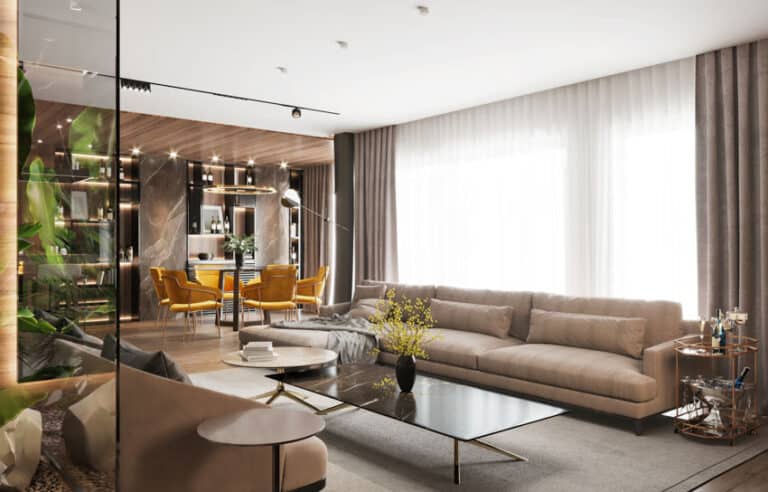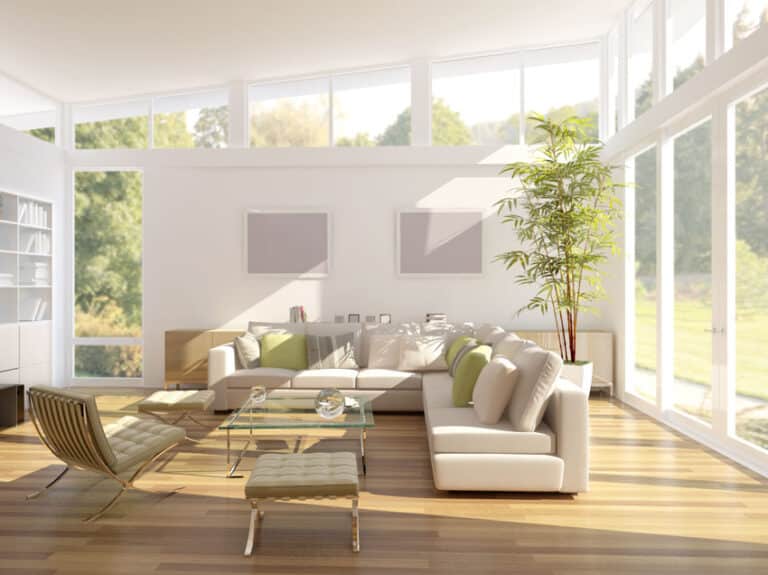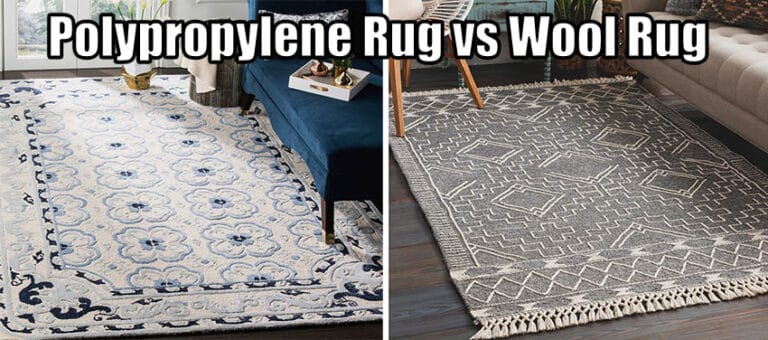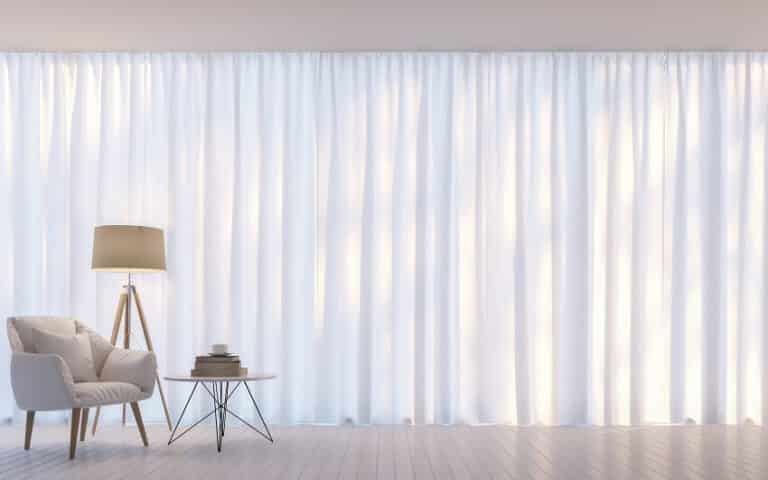Peel And Stick Laminate For Cabinets
Using peel and stick laminate for cabinets could help you with a room renovation or kitchen makeover. See the materials needed for cabinet refacing and some tips when applying peel and stick veneer over your laminated cabinets at home.
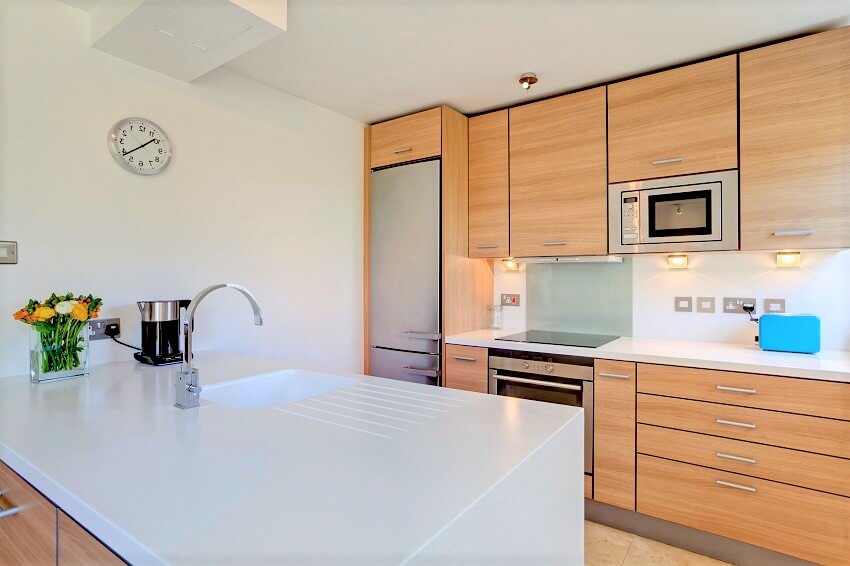
Sometimes, you want a fresh new look for your kitchen, and a great way to do that is to give your cabinets a makeover. Unfortunately, completely replacing your cabinetry can be costly, time-consuming, and labor-intensive. So, what can you do?
You can give your cabinets new life without going through the trouble of tearing them out and replacing them. One option you have is peel and stick laminate. Keep reading to learn everything about it!
What Is Peel And Stick Laminate?
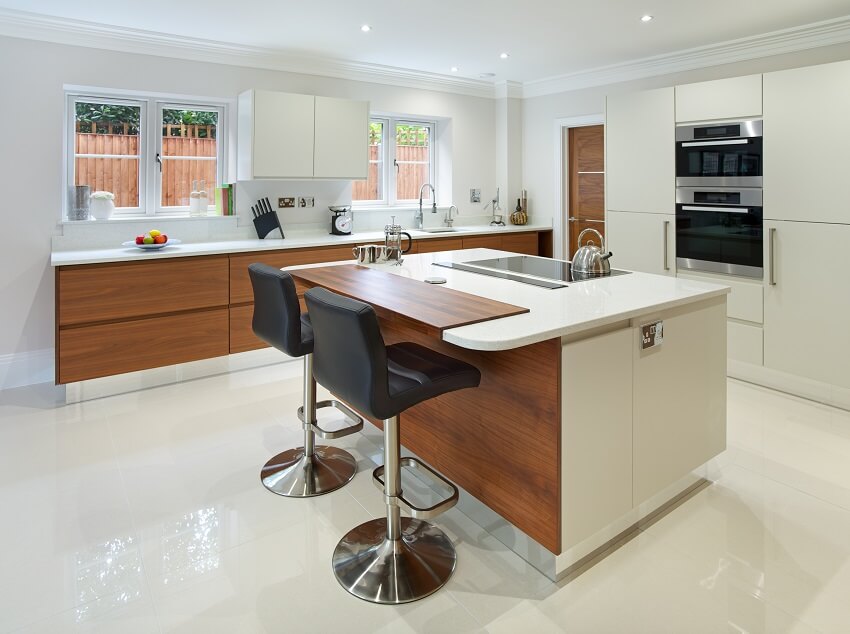
As mentioned, peel and stick laminate is great when you want to refresh your cabinets with a new look but don’t want to tear them out or replace them. You won’t even have to go as far as painting your existing cabinetry.
Instead, as the name suggests, you must take these self adhesive laminate sheets and peel the back off. Then, you’ll find that the back is sticky, and you can adhere it to your cabinets.
This way, you have a cabinet that looks new with only a fraction of the effort it usually takes to give your cabinets a new look. You might be surprised at how different it can make your kitchen look too!
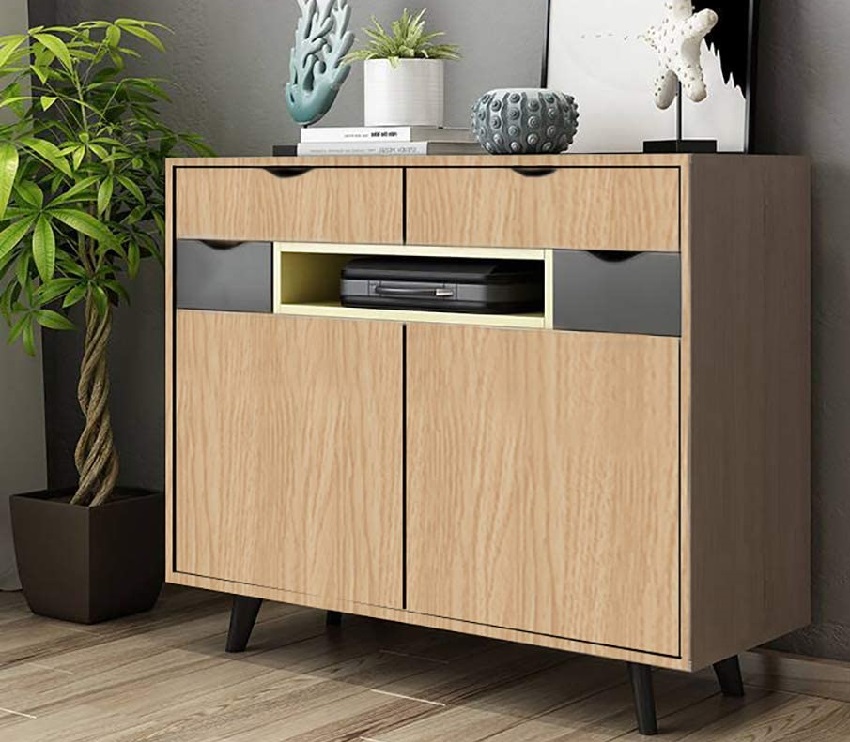
Unlike wood veneer, which uses a real hardwood layer for its surface, a peel-and-stick laminate is printed on to achieve its look. A laminate surface can closely resemble a real wood surface at a much less expensive cost.
Of course, you’ll want to be careful when you install a peel-and-stick laminate over a portion of your cabinet.
For the best results, you’ll want the peel and stick material to line up over your cabinets as close to perfectly as possible for the best most natural-looking results.
Peel-And-Stick Veneer For Cabinets

Just like any other home improvement option, peel-and-stick veneers come with their own pros and cons. Let’s take a look at what you need to know. To get started, let’s look at the positives. There are a lot of benefits to using veneer, and a lot of them relate to time and cost.
After all, installing brand-new cabinetry can cost thousands of dollars, while adding veneer can only cost dollars per square foot. Visit our guide to a kitchen remodel cost and start creating a spending plan!
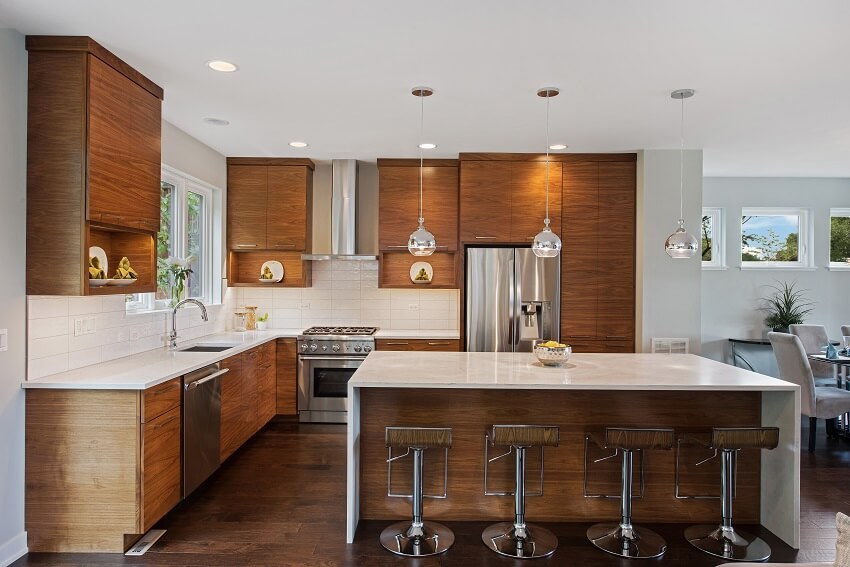
On top of that, by using a peel and stick veneer for your cabinets, you’re saving on the labor and materials of having to tear your cabinetry out and replace them with all-new material.
Even better, this means you won’t lose the use of your kitchen while cabinets are being removed and installed since you won’t have to remove all of the appliances and plumbing built into your cabinetry.
What’s often referenced as the biggest con to veneer applications is that they only offer to reface your cabinets.
Cabinet Refacing With Pealable Veneers

Peel and stick veneers are a type of cabinet refacing. In other words, you’re only changing what your cabinet looks like on a surface level.
This isn’t always a bad thing, either. It’s this surface-level change that makes the installation process more affordable and physically easier.
Yet, this also means that you’ll want to keep in mind that this is primarily an aesthetic change. If you want to switch out your cabinets to account for heavily damaged ones, for example, adding a veneer to your cabinetry won’t solve those problems. HGTV has a quick video tutorial on how to reface with veneer laminate.
Materials Needed For Laminate
At this point, we’ve covered that peel-and-stick laminates can save you a lot of time and effort when refreshing your cabinets. However, that doesn’t necessarily mean you won’t have to put in any effort.
Here is the list of materials needed:
| Materials | Description |
|---|---|
| Peel and Stick Laminate Sheets | Try to find one that matches your cabinetry. |
| Measuring Tape | To get the right measurement for materials. |
| Scissors or Utility Knife | To cut the product to fit. |
| Straight Edge or Ruler | Provides straight cuts for the best look. |
| Cleaning Supplies (Mild Detergent, Sponge/Cloth) | To clean cabinet surfaces for better adhesion. |
| Sandpaper or Sanding Block | To rough up high-gloss surfaces for better grip. |
| Squeegee or Plastic Smoothing Tool | To smooth out air bubbles and imperfections. |
| Straight Edge Level | Helps to apply the laminate straight. |
| Gloves (optional) | To keep your hands safe. |
| Pencil or Marker | For marking measurements. |
Of course, the first material that you’ll need is the peel-and-stick laminate itself. As we’ve discussed, one of the biggest benefits to this is that there are plenty of options, so anyone can find a veneer that fits their preferences.
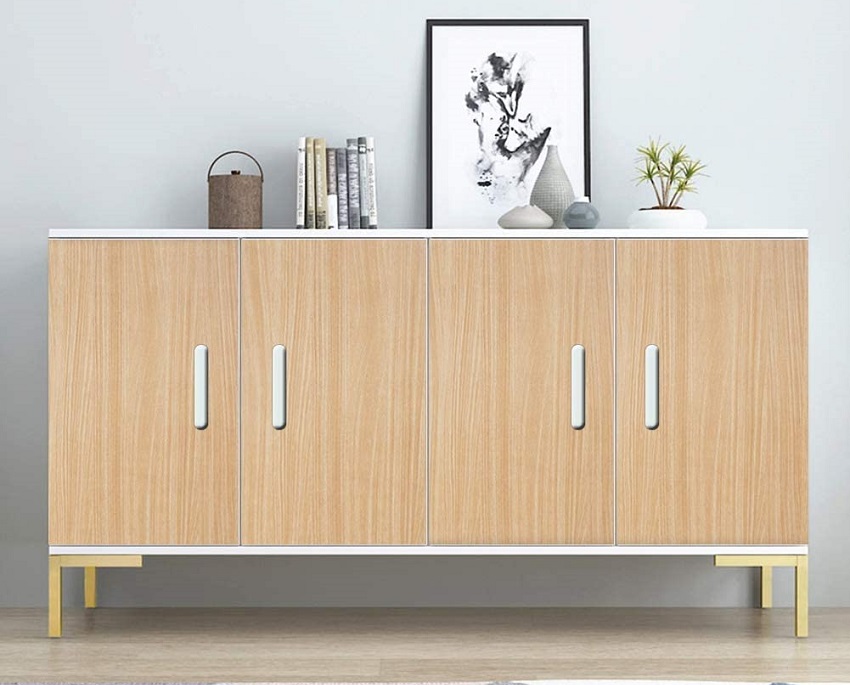
See this wood contact wallpaper at Amazon [sponsored link]
It’s also a good idea to take your cabinet doors off for this. This way, you can access every nook and cranny of your cabinets to ensure smooth and complete coverage.
From there, the laminate is self-adhesive, so you can usually just start carefully placing it. A putty knife is useful in ensuring the veneer is flush against your cabinet without any air pockets.
Since laminate is often sold in rolls, you’ll want to ensure you have a pair of scissors on hand as well. You can cut the material down as needed to fit your cabinet dimensions.
Can You Put Veneer Over Laminate Cabinets?

Definitely, but before you commit to any material, you’ll want to make sure that it will work for the project you have in mind.
As such, if you have laminate cabinets, you might be wondering if it’s okay to put a peel-and-stick veneer over them. Actually, for the most part, yes, you should be able to!
To get more into the details, you can do so as long as the surfaces are in good condition. If you don’t see any major, obvious damage, you’re probably fine with adding a stickable veneer over your laminate cabinetry.
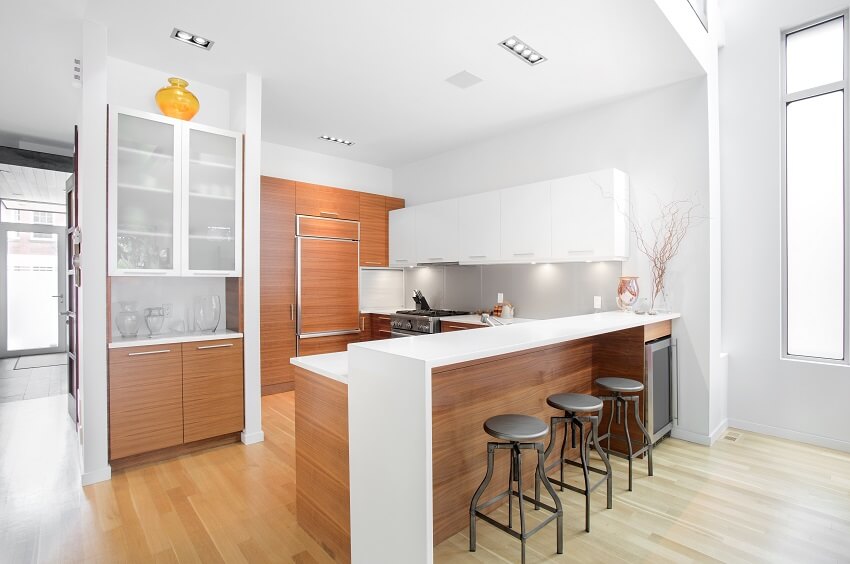
On the other hand, if you notice that your laminate cabinets have serious signs of wear, like peeling or, more severely, structural damage, you might find that the veneer doesn’t quite adhere as well as you might like.
However, adding a peel-and-stick veneer over this cabinetry shouldn’t be a problem for most homeowners! There are also peel and stick countertops and veneer backsplash options available.
There are a lot of benefits to laminate cabinet veneers. They can give you a new look for your kitchen without the usual heavy lifting and cost often associated with “new” cabinets.
All in all, they’re a pretty great way to breathe new life into your kitchen with less effort and time and a smaller dent in your budget.
Visit our guide to the best ways to update kitchen cabinets for more related content.

